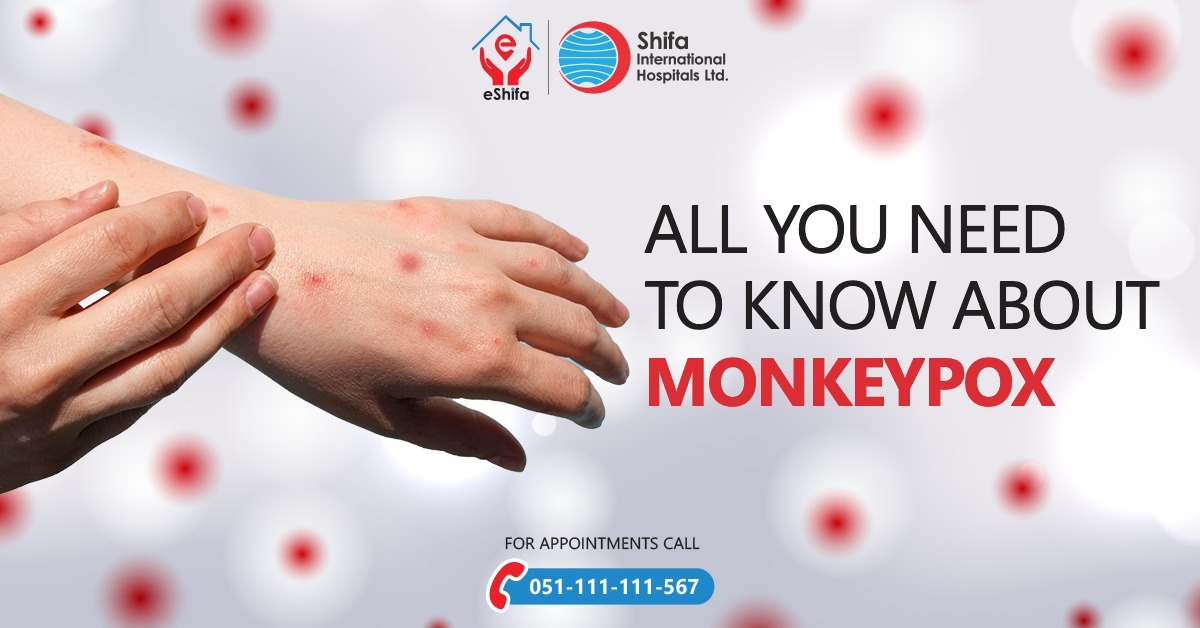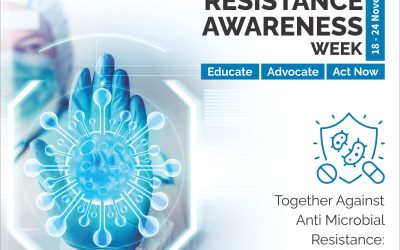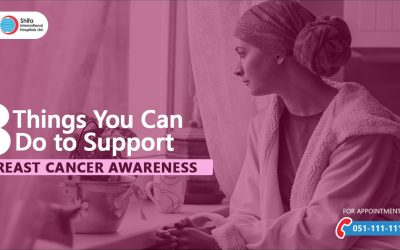Monkeypox isn’t Monkeying Around!
Every now and then, an outbreak of a rare disease or virus affects the planet, but never in our wildest dreams did we imagine an illness becoming a pandemic, as COVID-19 did. A new rare disease, monkeypox, which is quite similar to smallpox, is spreading quickly and showing unprecedented symptoms and effects. It has spread to all the major continents and has affected more than 200 people. The numbers are increasing day by day and have the potential to cause more distress or even become the next pandemic.
The monkeypox disease, which is related to smallpox, is not new. It is most usually associated with rodents, despite its name. The smallpox vaccine is the only possible treatment against monkeypox disease, and monkeypox cases have been on the rise in recent decades since routine smallpox immunization was ceased; the World Health Organization declared smallpox eradication worldwide in 1980. This suggests that vaccine-induced immunity is only found among the elderly.
Although most instances are documented in Central and West Africa, sporadic cases have been reported in Europe and other parts of the world, often involving travelers. Outside of Africa, the current outbreak is the largest ever.
Symptoms of Monkeypox:
Monkeypox symptoms are more or less similar to those of smallpox. Fever, headache, muscle aches, and tiredness are the first monkeypox symptoms. The fundamental distinction between smallpox and monkeypox symptoms is that monkeypox causes swollen lymph nodes, but smallpox does not. Monkeypox has a week or two incubation period from infection to symptoms, although it can be as short as a few days to a few weeks.
- Fever/Headache
- Muscle pain
- Backache
- Swollen Lymph nodes
- Chills/Exhaustion
- contagious
The patient develops a monkeypox rash for 1 to 3 days (sometimes longer) following the onset of fever, which usually starts on the face and spreads to other regions of the body.
Precaution:
The first and major monkeypox precaution to keep in mind is isolation. If you have been in contact with someone who is showing monkeypox symptoms or has gotten it, you must isolate yourself.
Isolated individuals are suspected of having monkeypox in a negative atmospheric environment. Patients should be placed in a private examination room if a negative air pressure room is not available. If neither of these options is practically doable, care should be taken to limit exposure to others in the immediate vicinity. These monkeypox precautions could include wearing a surgical mask covering your nose and mouth (if tolerated) and covering any exposed skin infections with a sheet or gown.
Other monkeypox precautions include:
- Hand hygiene should be practiced after any interaction with an infected patient and/or their environment while providing care.
- Containment and disposal of contaminated waste (e.g., dressings).
- Avoid contact with clothing material of affected person, when handling laundry (e.g., bedding, towels, personal apparel.
- Handle used patient-care equipment with caution to avoid contamination of skin and clothing.
Transmission:
When a person comes into contact with the monkeypox virus from an animal, human, or contaminated objects, the virus is transmitted. The virus enters the body through torn/infected skin, the respiratory tract, or mucous membranes even if they are not apparent like eyes, nose, or mouth. Bite or scratch, bush meat preparation, direct contact with bodily fluids or lesion material, or indirect contact with lesion material, such as through contaminated bedding, are all possible methods of animal-to-human transmission. Large respiratory droplets are assumed to be the primary mode of human-to-human transmission. Because respiratory droplets can only reach a few feet, prolonged face-to-face contact is essential. Direct contact with body fluids or lesion material, as well as indirect contact through clothing, are other human-to-human transmission mechanisms.
Treatment:
There is currently no approved treatment for monkeypox virus infections except for the smallpox vaccine. On the other hand, antivirals developed for smallpox patients may be beneficial. The Strategic National Stockpile (SNS) currently has the following medical treatments available for the treatment of monkeypox disease:
- Tecovirimat (also known as TPOXX) is an FDA-approved antiviral drug.
- Cidofovir (also known as Vistide) is an FDA-approved antiviral medication.
- The FDA approved Vaccinia Immune Globulin Intravenous (VIGIV).
Prevention:
Monkeypox prevention can be done in the following ways:
- Prevent coming into contact with animals that may be infected with the virus. This includes animals that are sick or that have been found dead in areas where monkeypox disease has been spread.
- Avoid touching any objects that come into contact with a sick animal, such as bedding.
- Keep infectious patients separate from those who could become infected.
- After coming into contact with infected animals or humans, wash your hands thoroughly with an alcohol-based hand sanitizer or soap.
Sources:
CDC
Harvard Health
WHO
monkeypox, monkeypox disease, monkeypox symptoms, monkeypox precaution.





0 Comments